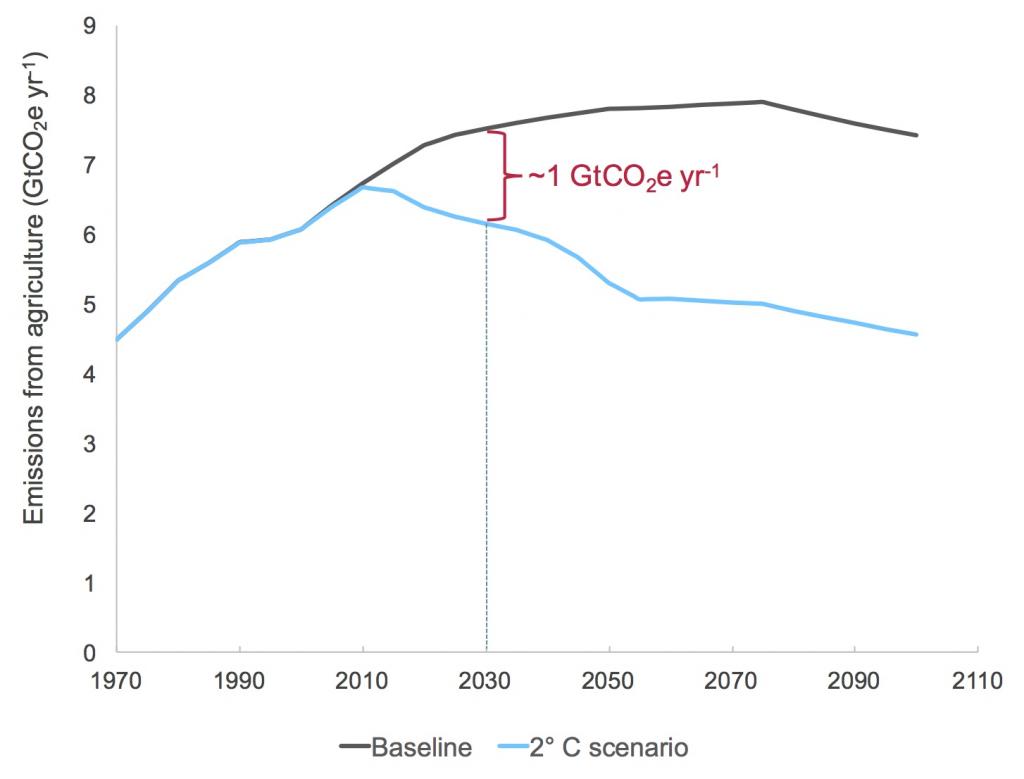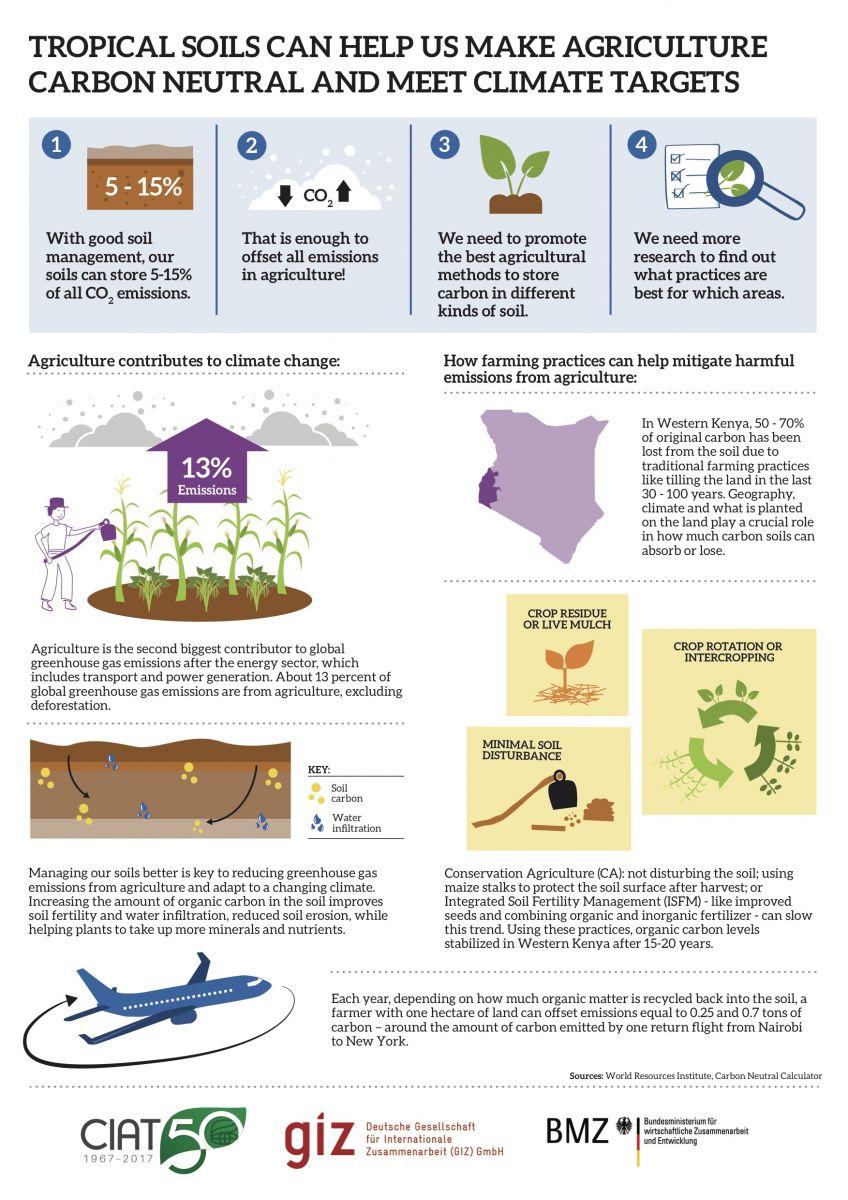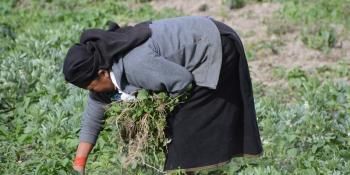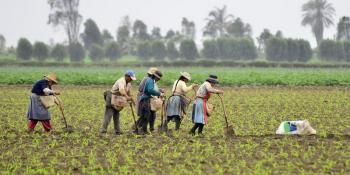Gathering momentum around soil carbon sequestration
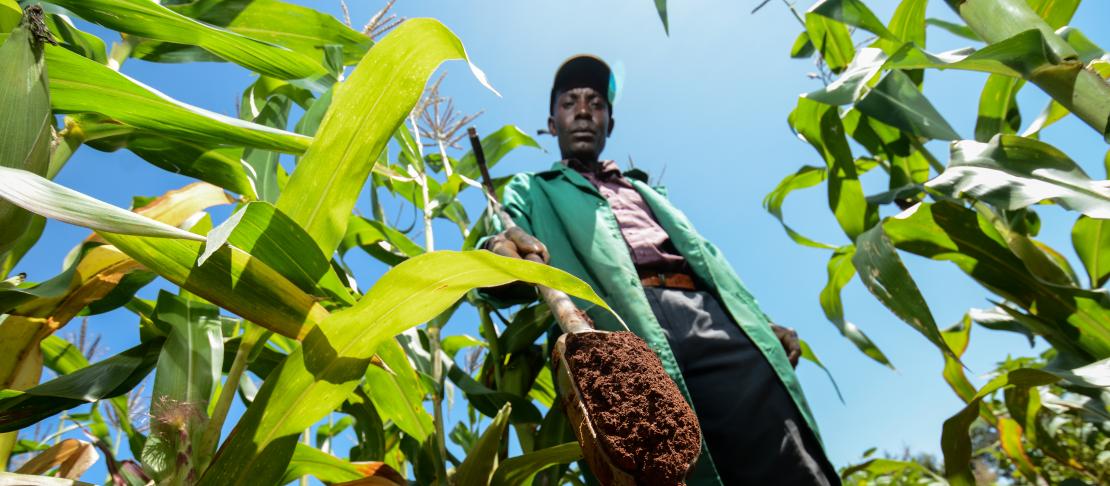
Evidence-based science on the mitigation and socio-economic impacts of soil carbon sequestration is needed to support commitments to sustainable development goals and the Paris Agreement target.
Given news of another year of record-high greenhouse gas emissions, negotiators at COP23 were bound to focus on increasing the pace and ambition of climate change mitigation.
We must get on track as fast as possible to meet the Agreement’s goal of limiting the global average temperature rise to well below 2 ˚C degrees and as close as possible to 1.5 ˚C. It is most important now to ensure governments, business and multilateral organizations, including the UN, coordinate their response closely to work further, faster and together for more ambitious climate action," Patricia Espinosa, Head of United Nations Climate Change, said in October.
Climate action is needed in all sectors. In agriculture, currently available technical options to reduce emissions are insufficient to mitigate the 1 gigaton of carbon dioxide equivalents per year necessary in the agriculture sector alone to meet the 2 ˚C target, according to the article “Reducing emissions from agriculture to meet the 2 °C target.” Authors point to the need for transformational technologies and widespread scaling up.
Soil carbon sequestration, they say, “can have equal or larger impacts on mitigation.”
COP23 agriculture decision points to potential of soil carbon sequestration
Sequestering organic carbon in soils increases soil fertility while also removing greenhouse gases from the atmosphere. Soil carbon sequestration is thus an essential component of both agricultural production and climate change mitigation strategies. But how much soil carbon sequestration is needed to increse yields? To contribute significantly to climate change?
The global 4P1000 initiative, established at COP21, aims to increase soil carbon stocks by 0.4% annually through a transition towards sustainable agricultural production and development and promoting farming techniques which combat soil erosion and improve soil health. This amount would halth the increase in greenhouse gas emissions, according to 4P1000. In 2017, scientists published an article in the journal Geoderma that describes the scientific basis, methodology, and objectives of soil carbon sequestration as a mitigation pathway.
At COP22, the UN Environment Programme (UNEP) launched the Global Peatlands Initiative to reduce global greenhouse gas emissions and save thousands of lives by protecting peatlands, the world’s largest terrestrial organic soil carbon stock.
And at COP23 in November, the UNFCCC released the first official decision – the Koronivia decision – calling for joint work on agriculture and funding to support it. The decision specifically named improved soil carbon, soil health and soil fertility.
Research focuses on food security and climate benefits of soil carbon
CGIAR scientists are conducting soil carbon research in dozens of tropical, developing countries. In 2017, they met in June and November to ensure CGIAR research on soil carbon is meeting the information and decision-making needs of countries.
With colleagues in government and other research institutions, scientists are providing data and analyses needed to guide national commitments and implementation of sustainable development goals (SDGs) related to soil, especially regarding climate action (13), zero hunger (2) and life on land (15).
Scientists at the November meeting presented research quantifying and characterizing soil organic carbon stocks in tropical, developing countries; assessing the degree to which management options influence sequestration; and analyzing how soil carbon, soil health and soil fertility are connected in different ecosystems and production systems. The following presentations are available online:
- Soil organic carbon: 4/1000 and land restoration, Leigh Ann Winowiecki and Tor-G. Vågen, World Agroforestry Centre (ICRAF)
- Forage cultivation influence in soil carbon accumulation, by Jacobo Arango, Intnerantional Center for Tropical Agriculture (CIAT) and colleagues
- CIAT soil carbon sequestration research, Rolf Sommer, CIAT, and colleagues
- Considering soil C information in decision-making, by Eike Luedeling, ICRAF & University of Bonn
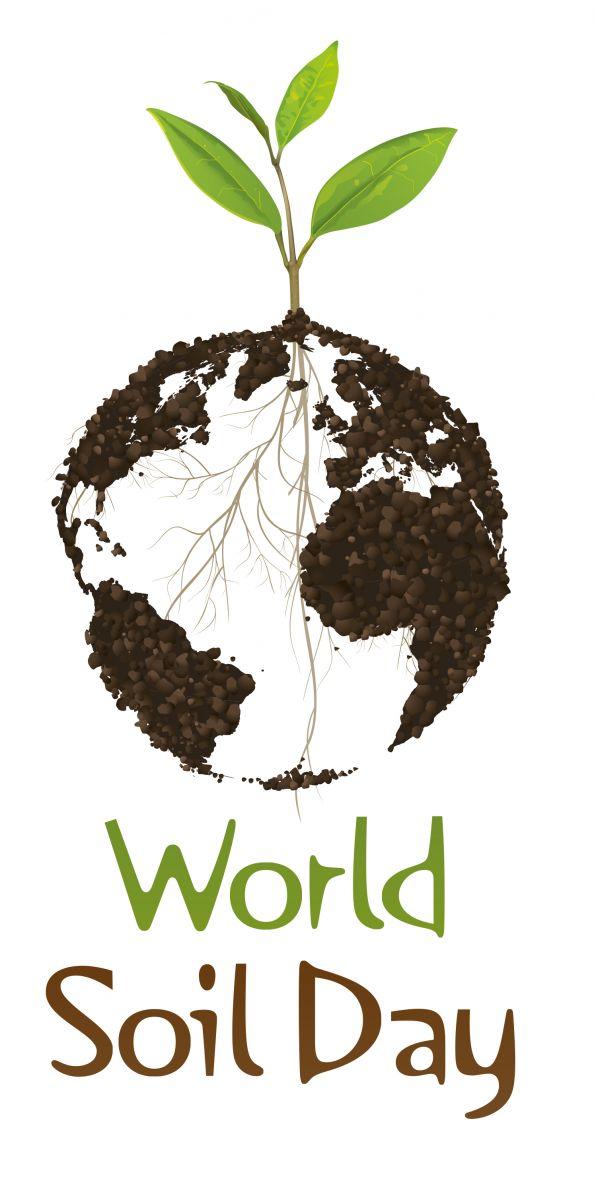
World Soil Day
On World Soil Day, we all – scientists, policy-makers, farmers, citizens – publicly recognize the importance of soils; a resource absolutely critical to our future food security and to climate change mitigation. The 2017 theme "Caring for the planet starts from the ground" speaks to the need for increased climate action to slow climate change mitigation. Rolf Sommer, soil scientist, published a recent blog encouraging further action.
All soils have the potential to sequester carbon if we can establish the right practices to do so within a given context," Sommer said.
Recent literature on soil carbon sequestration
Online resources
- 4 per 1000 Initiative.
- CCAFS Mitigation Options Tool (CCAFS-MOT). Online tool that ranks mitigation options in agriculture in relation to management practices and climate and soil characteristics.
- CIAT SOC APP. Online tool to calculate SOC sequestration amounts on agricultural land.
- Methods for smallholder quantification of soil carbon stocks and stock changes. Related video: Measuring soil organic carbon on smallholder farms in Ghana
- Soil Best Bets Compendium. Database
- The Land Degradation Surveillance Framework (LDSF) Field Guide.
Briefs
- Invest in climate-smart soil and land health. Brief published by IFAD and CCAFS.
- The potential of soil organic carbon sequestration for climate change mitigation and food security. CCAFS info note by S. Frank et al.
- Enhancing SOC sequestration: myth or reality in Africa? Presentation, FAO Global Symposium SOC 2017, R. Sommer
- The soil carbon dilemma in the humid tropics: cannot hoard it!? Presentation, EGU 2017, R. Sommer, B. Paul and J. Kihara
- Improving Africa’s soils to cut emissions and boost food security. CarbonBrief - WLE Opinion piece for Earth Overshoot Day by Shepherd & Sommer
- Integrated Soil Fertility Management: Contributions of framework and practices to climate-smart agriculture. Climate-smart agriculture practice brief by D. Roobroeck et al.
Publications
- Birnholz C; Braslow J; Koge J; Notenbaert A; Sommer R; Paul B. 2017. Rapid climate smartness assessment of GIZ soil protection and rehabilitation technologies in Benin, Burkina Faso, Ethiopia, Kenya, and India. CIAT Working Paper.
- Feliciano D, Nayak DR, Vetter SH, Hillier J. 2017. CCAFS-MOT - A tool for farmers, extension services and policy-advisors to identify mitigation options for agriculture. Agriculture Systems.
- Frank S, Havlík P, Soussana J-F, Levesque A, Valin H, Wollenberg E, Kleinwechter U, Fricko O, Gusti M, Herrero M, Smith P, Hasegawa T, Kraxner F, Obersteiner M. 2017. Reducing greenhouse gas emissions in agriculture without compromising food security? Environmental Research Letters.
- Minasny, B. et al. 2017. Soil carbon 4 per mille. Geoderma.
- Ortiz-Gonazalo D, Vaast P, Oelofse M, de Neergard A, Albrecht A, Rosenstock TS. 2017. Farm-scale greenhouse gas balances, hotspots and uncertainties in smallholder crop-livestock systems in Central Kenya. Agriculture, Ecoystems and Environment.
- Partey S, Zougmoré R, Ouédraogo M, Thevathasan N. 2017. Why Promote Improved Fallows as a Climate-Smart Agroforestry Technology in Sub-Saharan Africa? Sustainability.
- Rosenstock TS, Rufino MC, Butterbach-Bahl K, Wollenberg E, Richards M, (Eds.). 2016. Methods for Measuring Greenhouse Gas Balances and Evaluating Mitigation Options in Smallholder Agriculture. SpringerNature.
- Sommer R, Paul BK, Mukalama J, Kihara J. 2018. Reducing losses but failing to sequester carbon in soils – the case of Conservation Agriculture and Integrated Soil Fertility Management in the humid tropical agro-ecosystem of Western Kenya. Agriculture, Ecosystems and Environment.
- Vågen, T-G, Winowiecki, L. 2013. Mapping of soil organic carbon stocks for spatially explicit assessments of climate change mitigation potential. Environmental Research Letters.
- Vågen, Tor-G., Winowiecki, L., Tondoh, J.E., Desta, L.T. and Gumbricht, T. 2016. Mapping of soil properties and land degradation risk in Africa using MODIS reflectance. Geoderma.
- Vågen, T-G, Winowiecki, L., Abegaz, A., Hadgu, K. 2013. Landsat-based approaches for mapping of land degradation prevalence and soil functional properties in Ethiopia. Remote Sensing of Environment.
- Winowiecki, L., Vågen, T-G, Huising, J. 2016. Effects of land cover on ecosystem services in Tanzania: A spatial assessment of soil organic carbon. Geoderma.
- Winowiecki, L., Vågen, T-G., Massawe, B., Jelinski, N.A. , Lyamchai, C., Sayula, G. and Msoka, E. 2015. Landscape-scale variability of soil health indicators: Effects of cultivation on soil organic carbon in the Usambara Mountains of Tanzania. Nutrient Cycling in Agroecosystems.
NEWS
- Soil carbon sequestration – when aspirations and reality collide. 5 Dec 2017
- Global carbon tax would increase undernourished by 80-300 million; alternative strategies protect food security. 4 Oct 2017
- 4P1000 receives Future Policy Vision Award from the World Future Council. 22 Sept 2017
- What is CGIAR doing on soil carbon and climate change? 28 June 2017
- Book and videos explain how to measure soil carbon, greenhouse gas emissions and analyze mitigation options in smallholder farming. 1 June 2017
- Sink it or lose it: the carbon trade-off, 17 March 2017
- From the ground up: Africa aims for sustainable, resilient soil management to combat climate change, Nov 17, 2016

